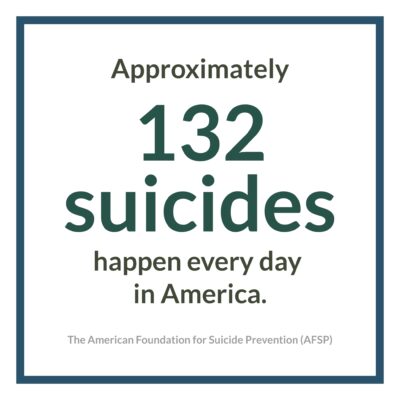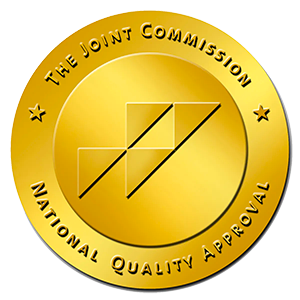By Anna McKenzie
Suicide is so final, but there are several steps taken before someone actually attempts to take their own life. Suicidal ideation is the clinical term we use when you are contemplating suicide. This may involve imagining how you might do it or what the world would be like without you, or fantasizing about ending your pain through suicide. Suicidal ideation can arise from difficult life circumstances such as poverty or abuse, mental illness, poor physical health, trauma, or even medication. When you are suffering from suicidal ideation and can receive mental health support, it can considerably decrease your risk of a tragic outcome.
When you are suffering from suicidal ideation and can receive mental health support, it can considerably decrease your risk of a tragic outcome.
Increasing Suicide Awareness
 Increasing suicide awareness is critical to prevention efforts. Timely intervention and treatment can mean the difference between life and death for those who are suffering from suicidal ideation. The American Foundation for Suicide Prevention (AFSP) provides the following US suicide statistics based on data from 2021:
Increasing suicide awareness is critical to prevention efforts. Timely intervention and treatment can mean the difference between life and death for those who are suffering from suicidal ideation. The American Foundation for Suicide Prevention (AFSP) provides the following US suicide statistics based on data from 2021:
- Suicide is the 11th leading cause of death in America.
- Firearms account for over 50% of suicide deaths.
- Approximately 132 suicides happen every day.
- Men are nearly four times as likely to die by suicide as women.
- White men accounted for nearly 70% of all suicide deaths in 2021.
- For every one person who committed suicide in 2021 (over 48,000), 35 people attempted suicide (1.7 million).
- Those who suffer from depression are 20 times more likely to die from suicide than those who do not, reports the International Association for Suicide Prevention (IASP).
According to the Centers for Disease Control and Prevention (CDC), the US suicide rate increased by 2.6% between 2021 and 2022. In 2023, over 50,000 people in America died by suicide, reports NBC News. The CDC says the age group with the highest rate of suicide is those 75 and older, followed by the 25-34 age group. In terms of how the US suicide rate compares to other countries, the AFSP says American suicide rate is about 14 for every 100,000 people, but the global suicide rate is about 10 in every 100,000 people, says the IASP.
In some cases, it can be hard to tell if someone is struggling with suicidal ideation as their mood is not always an accurate indicator. The CDC lists a number of risk factors for suicide, which range from individual to relational, community, and societal:
- Previous suicide attempt
- History of depression or other mental health conditions
- Serious physical illness
- Substance use
- Financial or job loss
- Family history of suicide
- Being bullied
- High conflict relationships
- Social isolation
- Lack of access to healthcare
- Community violence
- Trauma (personal or historical)
- Stigma of seeking treatment
- Community violence
- Discrimination
- Easy access to lethal means (like firearms or drugs)
Improper storage of firearms can increase the risk of suicide, especially among military personnel and veterans, reports the USO. RAND research indicates the suicide rate for veterans is two to three times higher than that of the general population. If you have firearms in your home, please consult this guide from the US Department of Justice on the safe storage of firearms to help prevent your loved one from harming themselves or someone else.
Help for Someone Experiencing Suicidal Ideation
To understand your risk for suicide, the CDC has compiled this Suicide Risk Assessment which includes suicide warning signs, risk factors, and positive factors that help prevent suicide. If you feel that you or someone you love is at an increased risk for suicide, here are some ways that can help:
- Consult a physician if medication is being taken that may have the side effect of increasing suicidal thoughts.
- Consult a treatment professional as soon as possible, whether it’s a licensed therapist or an expert at an inpatient or outpatient treatment program.
- Increase your engagement and support of the person at risk. Offer to listen and provide any reasonable help they might need to get through their crisis.
- Limit access to means of suicide, such as putting guns in a gun safe, locking away drugs, and removing knives or sharp objects.
- Contact the suicide helpline (988) for support and potential care options. With the increase in calls since its release, chat and text features with LGBTQ+ support has also been added to the 24/7 helpline.
- If someone you know is expressing an urgent desire to end their life, call the suicide helpline (988) immediately.
A mental health crisis such as suicidal ideation can be caused by many factors. Treatment can help stabilize your mental and physical health, and it can also make you feel more supported and connected. Connection is the best antidote for suicide risk. According to the CDC, when you feel connected in relationships and in your community, you are less likely to commit suicide. It also helps to have positive coping skills, a strong sense of cultural identity, and reasons for living — including family, friends, and pets.
When you feel connected in relationships and in your community, you are less likely to commit suicide.
Help for Mental Health Issues and Suicide Risk
If you or someone you love is dealing with mental health issues and is at risk of suicide, contact our professional treatment team at Bournewood today. Our partial hospitalization programs provide compassionate treatment to address the root causes of mental health issues, suicidal ideation, and substance use. Our goal is to help your loved one recover safely and rediscover their authentic self. Contact us today to learn more about how we can help.


